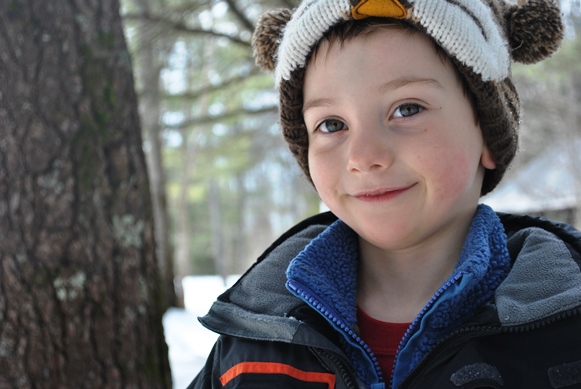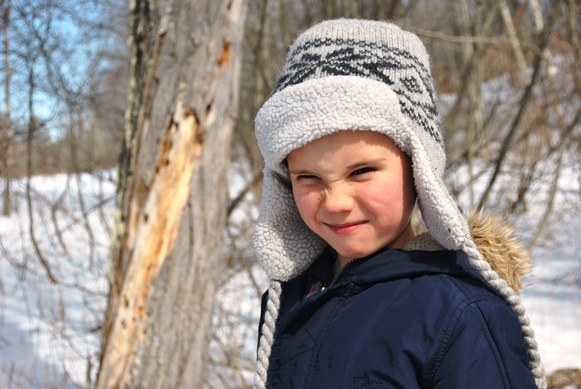The Wrack
The Wrack is the Wells Reserve blog, our collective logbook on the web.
The Wrack is the Wells Reserve blog, our collective logbook on the web.

The following was published in the Biddeford-Saco Journal Tribune Sunday edition, 12/7/2014.
My family likes to takes walks, particularly in the fall and winter. Given the calories we’re consuming lately, and the long nights given over to reading and TV, we’re trying to grab every opportunity we can to stretch our legs and lungs outside.
While golf may be a great way to spoil a long walk, as the saying goes, fortunately there’s nothing like the scientific method to enhance a little wander through the woods. Proposing, testing, and analyzing hypotheses prevents hypothermia by keeping the brain warm, I tell my wife and kids. They roll their eyes… but then we find something to examine.
We discovered perfect two-inch columns of ice in the mud at Bradbury Mountain State Park in Pownal before Thanksgiving. Science tells us that the tall hexagonal prisms were most likely formed in temperatures in the mid-20s Fahrenheit. Ice crystals will almost always be six-sided due to oxygen’s bigamous marriage with hydrogen. Snow has a blue-white color because light is scattered mostly equally within the ice crystals, with just a little absorption of the red end of the spectrum.
The pre-Thanksgiving snow ushered in a new world to re-explore. Last Sunday, my boys and I meandered through the familiar Fore River Sanctuary, which is well maintained by Portland Trails. Walking along buried train tracks, we easily deduced that no trains had run through since the snowfall. I got to explain what would happen if either boy licked a rail. The thermal conductivity of metals, and the fragility of tongue cells, proved a chilling lecture.
To lighten the mood, we made some small snowmen and placed them on the tracks. I christened one “Anna Karenina” and [spoiler alert] placed her head next to her body. Then the boys and I fashioned some bowling pins out of snow and arranged them on the tracks too. Some train engineer will get a strike soon, but will anyone else witness the Newtonian action?
Back in the forest, we stumbled on a mystery, a real whodunit. There was blood on the trail. We put on our “True Detective / Law & Order” investigator expressions and bent closer to look. I proposed a murder weapon (talons) and a motive (dinner) to the boys, but asked them for a suspect and where they thought the body could be. “Inside an owl pellet?” ventured one of my deputies. I ruffled his hair. “Smart thinking, detective.”
But then, five feet further down the trail, we found more blood. This time it was in the middle of a paw print. And a red stain repeated in the snow every few feet, always in a paw print. Our homicide hypothesis was finito; “death from above” instead became a broken nail on an anonymous mutt. Failure is just as good a teacher, I told my investigators.
At the Wells Reserve, my office, the seven miles of trails through forest, field, and beach offer plenty of other mysteries. Why is a there a fence rail suspended twenty feet up in a tree down by the beach? Do the windfallen apples roll into groups naturally, or is someone or something sweeping them together? And, hey, who’s been stacking up stones into improbable cantilevered towers?
Meanwhile, while my family and I take our wondering walks, the scientists of the Wells Reserve are still running green crab and global warming experiments on the salt marsh, teasing a little order out of the apparent chaos of nature. That’s what science does. It brings light to the darkness, offers possible solutions to myriad puzzles.
Knowledge begins with asking questions and venturing some answers. To us, that wondering is best enjoyed while wandering through the world. As Rachel Carson, the patron saint of our Maine coast, once wrote: “I should ask that [a] gift to each child in the world be a sense of wonder so indestructible that it would last throughout life, as an unfailing antidote against the boredom and disenchantments of later years.” Seems like a pretty great gift to give this holiday season.

Nik Charov is president of Laudholm Trust, the nonprofit partner of the Wells National Estuarine Research Reserve in Wells, Maine. His Sunday column, “Between Two Worlds,” ventures forth from the intersection of art and science, past and future, correct and not. More at wellsreserve.org/twoworlds.